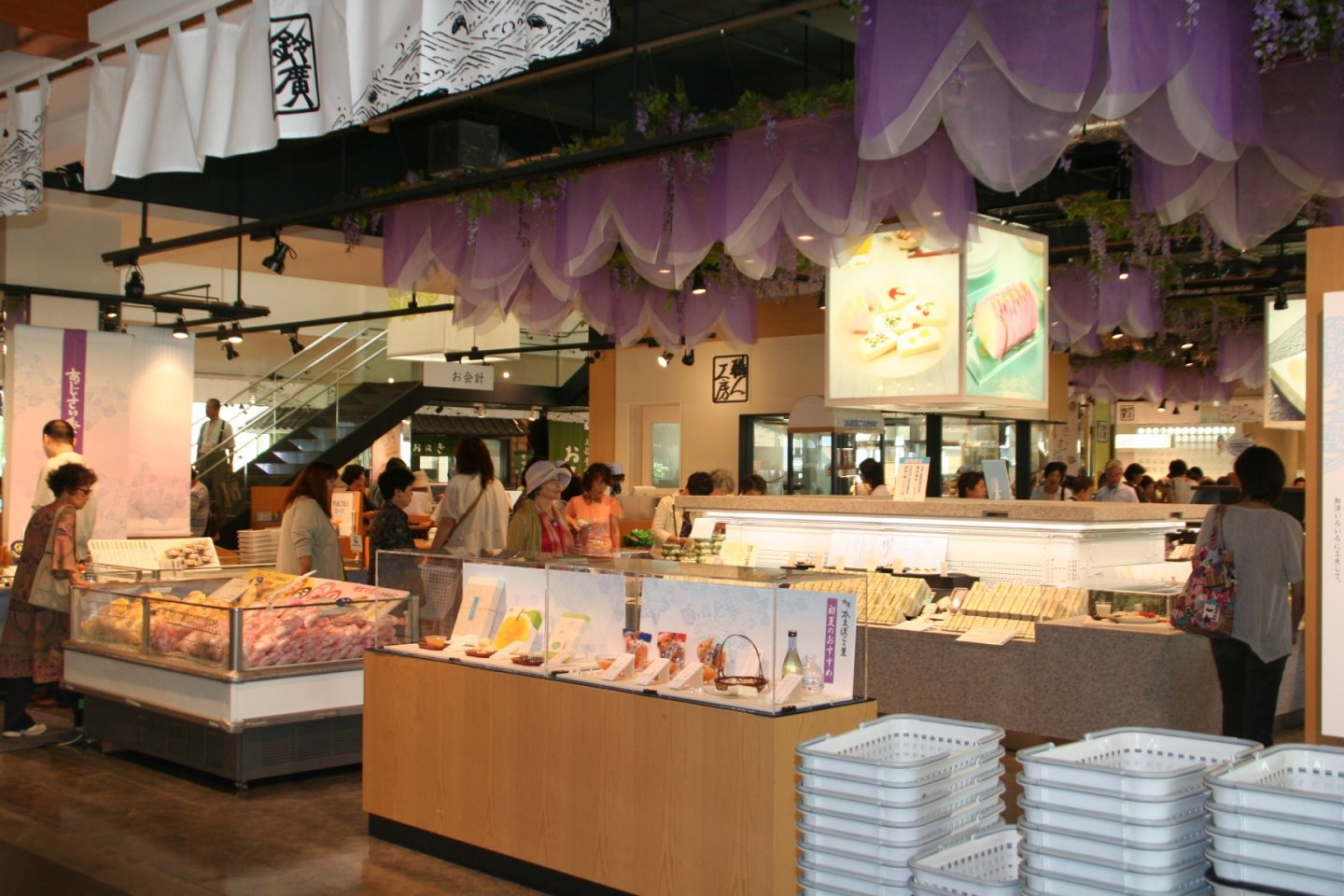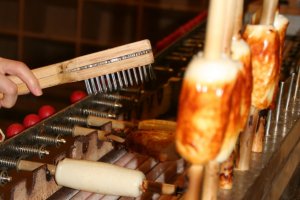The smell of the Suzuhiro Kamaboko Museum in Odawara leaves no doubt that real fish, and lots of it, is being processed here. The smell is not overwhelming nor offensive, but there is a definite waft of seafood present everywhere. Suzuhiro has been making kamaboko, fish paste formed into small loaves onto wooden slabs and then steamed, in the Odawara area since 1865.
The museum is part of a larger complex that consists of a spacious retail outlet and several restaurants. Inside the cozy museum, there is a glass-enclosed area where visitors can watch workers put together various products made from processed fish paste, an open kitchen for the kamaboko-making workshops, a gift shop, interactive displays and a gallery showing artwork using the wooden slabs from kamaboko as the canvas.
There are various displays to entertain visitors while they wait for their kamaboko or chikuwa fish pastes to cook. For example there is an Edo-era hand-operated pounding and grinding mortar, as well as various wooden molds used to create ornate, decorative kamaboko used in celebrations.
Before long, the chikuwa we made is ready to eat. This is tasty stuff. The skin is slightly burned and crispy, and the fish paste hot and aromatic. Next door to the museum is Kamaboko no Sato, a large retail outlet selling an enormous range of fish paste products, local seafood and even beer made at microbreweries. Kamaboko is usually regarded as a cheap snack, but Suzuhiro products are of a higher quality, using more fish than filler. If you get hungry for more than fish paste, across the road, there are several restaurants, including a buffet, a fine dining Japanese restaurant and a soba shop.
There are four sessions for making kamaboko and chikuwa seven days a week. On Wednesdays, there is only chikuwa to be made, but there are six sessions. Reservations can be made at: http://www.kamaboko.com/museum/reserve/ (form in Japanese only) If you want to make a reservation within 72 hours, call 0465-24-6262 to reserve over the phone. Weekends are usually booked up one month in advance.
Odawara is home to one of Japan’s most famous historical castles. With its view over the Pacific Ocean, foreign visitors have called this one of the most “romantic” castles in the country. The castle museum has information in English. Combining the castle visit with kamaboko-making would make a fun-filled day trip from Tokyo.






























